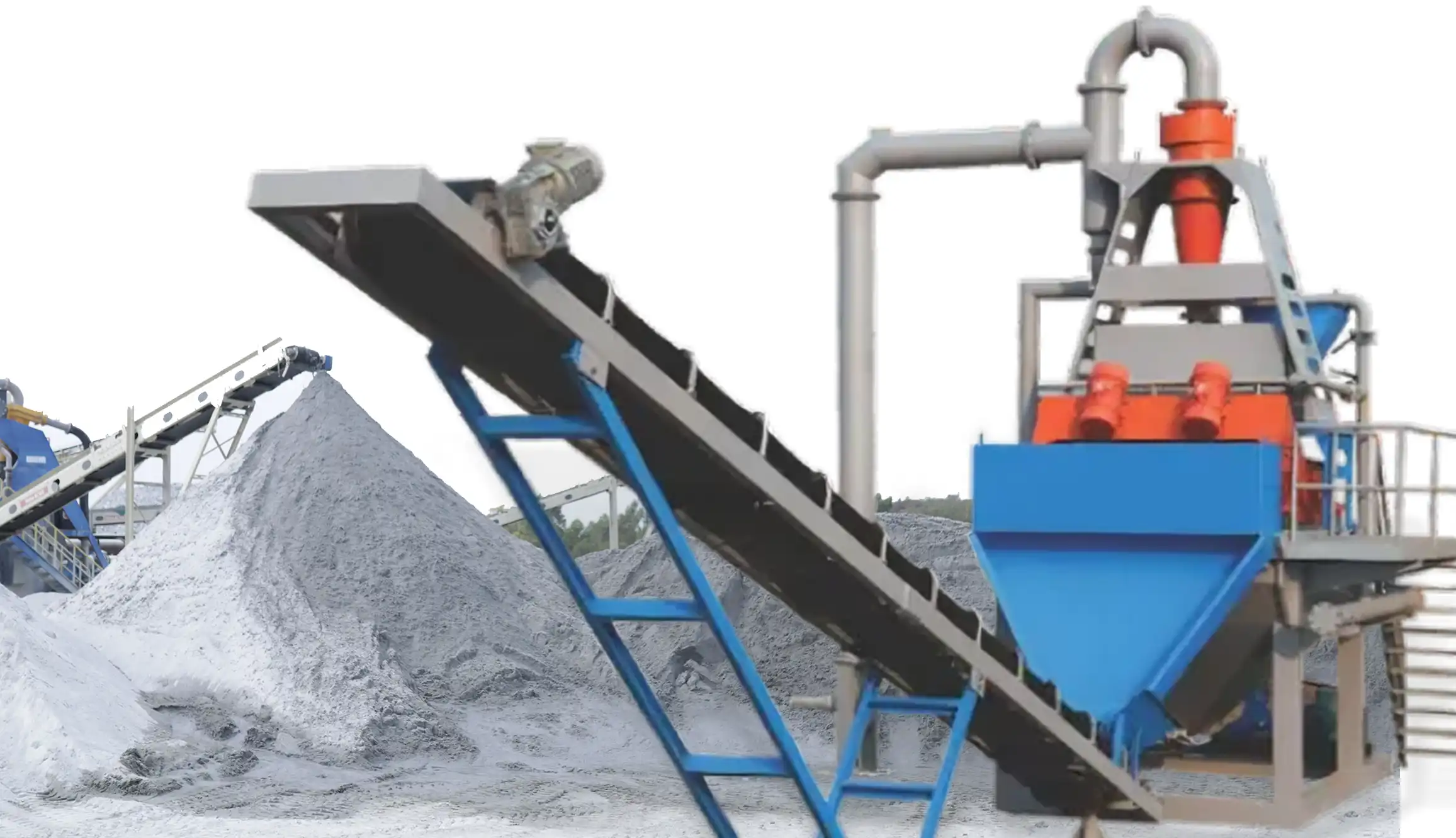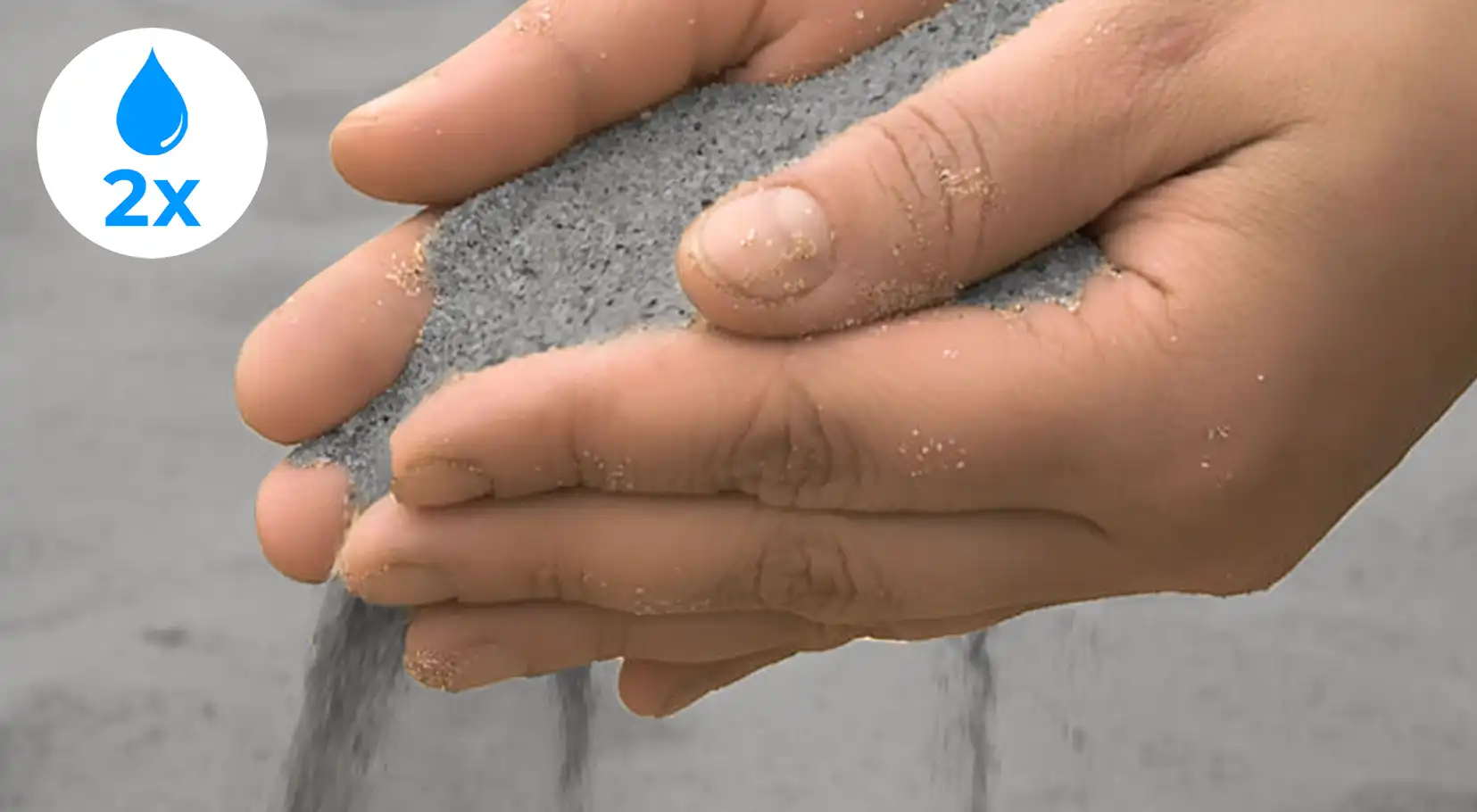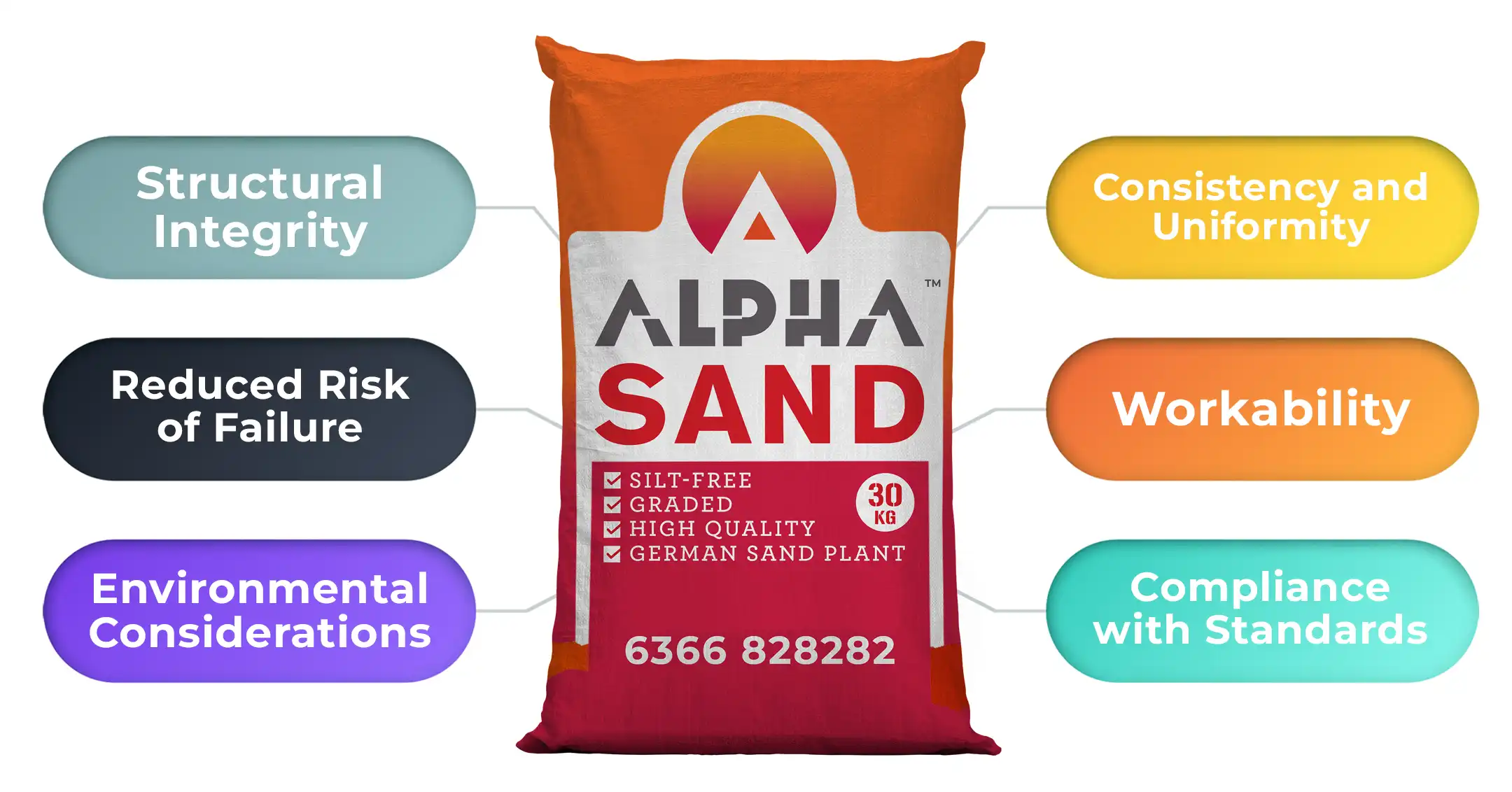
Sand is the most essential raw material in the construction industry. Acts as the foundation for construction. As the demand for sand grows, new terms, such as single-washed, double-washed, and triple-washed sand, have emerged, causing confusion and misconceptions. Each of these terms is often associated with specific sand qualities and applications, but the absolute truth behind them is that they are misconceptions and myths.
In this article, we aim to debunk the myths about single, double, and triple-washed sand, clarifying their true significance and addressing common misconceptions. However, these terms are being used to convey the idea of cleaner sand and the lack of standardization within the industry. On the other side, many individuals assume that the number of washes determines the quality of sand, leading to decisions that may not align with the construction requirements.
Table of Contents:
Sand Washing Process
Scrubbing and Washing
Benefits of Sand Washing
What is Single-Washed Sand?
What is Double-Washed M Sand?
What is Triple-Washed Sand?
What is Sand Washing?

Sand washing is a process that uses water and a mix of other chemicals, like polyacrylamide, to remove impurities like silt, dust, clay, and other unwanted particles from sand.
Sand Washing Process:
The below steps explain the process of sand washing in detail.
Feeding:
Sand is initially fed into a feed hopper. This may be a conveyor belt or other feeding mechanism that transports the raw sand to the washing unit.
Screening and Classification:
The sand first passes through a screening system to remove large particles, debris, and oversized materials. After screening, the sand is classified based on debris, particles, and oversized materials.
Scrubbing and Washing
Scrubbing and washing involve mixing sand and water to create a slurry. The slurry is used to remove clay, silt, and other impurities. Scrubbing breaks down the impurities and prepares the sand for further washing and cleaning.
Sand Washing and Desliming:
The scrubbed slurry is sent to a sand washer. The sand washer has rotating impellers or screw spirals to agitate the sand and help remove impurities. As the sand is washed, the lighter impurities float away while the cleaner sand settles to the bottom.
Dewatering:
After washing, the sand and water mixture undergoes dewatering. This process separates excess water from the sand using dewatering screens or other techniques.
Benefits of Sand Washing:
Improved Sand Quality:
Sand washing removes harmful impurities from construction sand, making it stronger and long-lasting.
Enhanced Workability:
Clean sand with well-graded particles allows for better workability of concrete and mortar mixes, leading to more robust and aesthetically pleasing.
Minimization of Environmental Impact:
The sand washing process often involves recycling water, reducing overall consumption, and minimizing the discharge of contaminated water into the environment.
Single-Washed Sand
What is Single-Washed Sand?

The term "single-washed sand" has no standardized meaning and may differ depending on the sand supplier.
One common misconception in the construction industry is that single-washed sand is synonymous with manufactured sand. M sand is a type of sand produced by crushing rocks into smaller particles.
The term single-washed sand should be assessed based on its particle size distribution.
In order to ensure the desired quality of sand for construction projects, it is important to clarify that single-washed sand should not be compared to manufactured sand but rather based on its particle size distribution and impurity content.
Confused About Single-Washed Sand with M Sand:
A common myth and a significant misconception in the market is the belief that single-washed m sand is the same as manufactured sand. However, there is no standardized term called Single Washed Sand; it is merely a name used by a few sand suppliers. Unfortunately, many sand suppliers capitalize on customers because of their limited knowledge and falsely market Single Washed Sand as M sand. To make well-informed choices, customers must remain cautious and seek information from reputable suppliers who can offer transparent details about the sand's origin, properties, and adherence to industry standards. Customers can ensure they procure the appropriate sand for their specific construction needs by understanding the difference between M sand and single-washed sand.
In reality, single-washed sand doesn’t have a clear meaning, so it is very important for the customers to understand what exactly single-washed sand is to make an informed decision.
This deceptive practice may cause customers to inadvertently purchase ordinary washed sand while believing it to be M sand. To make informed decisions, customers must exercise caution and seek information from reputable suppliers who can provide transparent information about the sand's origin, properties, and adherence to industry standards.
Assuming Superior Quality:
Some people may believe that single-washed sand is of higher quality than other types of sand. Despite the fact that washing improves sand quality by removing impurities, the final quality depends on several factors, including the source of the sand, the washing process, and the amount of impurities present.
Neglecting Particle Size Distribution:
Another misconception is overlooking the importance of particle size distribution in sand quality. Particle size influences the workability and strength of concrete and mortar. Even if a sand sample has been washed once, it may fail to meet the required specifications if the particle size distribution is not appropriate for the intended construction application.
To ensure the desired sand quality for construction projects, customers, contractors, and suppliers must clearly communicate about the sand's characteristics and properties. This includes determining the particle size distribution, checking for impurities, and ensuring that the sand meets the specifications for the specific construction application.
It is always best to obtain sand from reliable and reputable sources that can provide detailed information about the sand's properties, suitability for various construction purposes, and any available testing or certifications.
Double-Washed Sand:
What is Double-Washed M Sand?

Generally, double-washed m sand is known as concrete or C sand, but the term double-washed sand does not have a standardized meaning and may vary depending on the sand suppliers. One common misconception in the construction industry is that double-washed sand is synonymous with concrete sand or fine M sand. Concrete sand is a well-graded sand that can be used to make concrete.
Similar to single-washed sand, the term "double-washed sand" lacks a standardized definition. Different suppliers and regions may interpret it differently, leading to confusion among customers and construction professionals.
Confused About Single-Washed Sand With Concrete Sand?
One common misconception is mistakenly associating double-washed sand with fine M sand or concrete sand. Concrete sand is a high-quality sand that is ideal for use in concrete production. It is defined not by the number of washes it goes through but by its particle size distribution, which is critical to concrete strength and workability.
Overemphasizing the Number of Washes:
Assuming that the number of washes directly correlates with sand quality or suitability for concrete is misleading. While washing sand can remove impurities and improve its quality, it is not the only factor that determines whether it is suitable for use in concrete.
Ignoring Particle Size Distribution:
The particle size distribution of sand is critical for concrete mix design. Concrete sand should contain well-graded particles that are a mix of fine and coarse particles. This ensures proper bonding between cement and aggregates, resulting in a strong and durable concrete mix.
To debunk the myth of double-washed sand, focus on evaluating the sand's properties in relation to concrete sand requirements. This includes analyzing the particle size distribution, detecting impurities, and ensuring that the sand meets the specifications for concrete production.
Contractors and construction professionals should communicate openly with suppliers in order to understand the sand's properties and suitability for their specific project requirements. Obtaining sand from reputable sources that can provide detailed information about the sand's properties and any available testing or certifications will help ensure the use of high-quality sand in construction projects.
Triple-Washed Sand:
What is Triple-Washed Sand?

Generally, triple-washed m sand is called plastering sand or P sand, but the term triple-washed sand does not have a standardized meaning and may vary depending on the sand suppliers. One common misconception in the construction industry is that triple-washed sand is synonymous with plastering sand. Plastering sand, on the other hand, is a specially graded sand that is ideal for plastering applications. The number of washes the sand undergoes does not determine whether it is suitable for plastering.
Like single and double-washed sand, "triple-washed sand" lacks a standardized definition. Different suppliers may use the term differently, leading to confusion among customers and construction professionals.
Misjudging Suitability:
Relying solely on the term "triple-washed sand" to gauge its appropriateness for plastering can be misleading. Sand's quality and suitability for plastering should be determined by particle size distribution, the absence of impurities, and compliance with plastering sand specifications.
Importance of Sand Characteristics:

To ensure that the sand is suitable for plastering, construction professionals should consider its fineness, grading, and the absence of harmful impurities. These factors influence the plaster mix's workability and bonding properties.
To clarify the reality behind triple-washed sand, it is essential for construction professionals to communicate clearly with suppliers about the specific requirements for plastering sand. They should obtain detailed information about the sand's properties and any available testing or certifications to ensure its suitability for plastering.
Construction professionals can make informed decisions and use the correct type of sand for their plastering projects if they understand that the number of washes does not determine the sand's quality or suitability for plastering.
Choosing high-quality sand is extremely important in construction projects for several reasons.
Structural Integrity:
Sand quality directly impacts the strength and durability of the building. Sand with appropriate particle size distribution and properties ensures proper bonding with cement and aggregates, resulting in a strong and long-lasting structure.
Workability:
The right type of sand improves the workability of concrete and mortar mixtures. It simplifies the process of placing and finishing the material, resulting in increased construction efficiency and aesthetics.
Reduced Risk of Failure:
Poor-quality sand may contain excessive impurities such as silt, clay, or organic materials. These impurities can weaken the construction over time, resulting in structural failures or a shorter lifespan.
Consistency and Uniformity:
Quality sand sourced from reputable suppliers ensures consistency and uniformity in the construction materials. This helps maintain a predictable and reliable construction process.
Compliance with Standards:
Using sand that meets industry standards and specifications is crucial to complying with building codes and regulations. It ensures that the construction meets safety and quality requirements.
Environmental Considerations:
High-quality sand is frequently washed and processed, minimizing the environmental impact of construction activities. It minimizes the discharge of harmful substances into water bodies and helps preserve the environment.
To select quality sand, construction professionals should consider specific sand characteristics, such as particle size distribution, silt content, and clay content. Working with reputable suppliers who can provide accurate information about sand quality and compliance with industry standards is critical for making informed choices.
Investing in quality sand may have higher initial costs, but it pays off in the long run with improved structural performance, lower maintenance, and higher overall construction quality. In construction, compromising on sand quality can result in costly and unavoidable problems, so it is critical to prioritize quality sand selection in any building project.
Conclusion:
In construction, sand quality is critical to the success of any project. The common misconceptions about single-washed, double-washed, and triple-washed sand highlight the importance of clear sand terminology. Manufactured sand, concrete sand, and plastering sand are all types of sand that are distinguished by their suitability for specific construction applications rather than the number of washes they have undergone.
Construction professionals should prioritize sand quality, focusing on specific characteristics rather than using ambiguous terms. Construction projects can use high-quality sand by working with reputable suppliers and adhering to industry standards, resulting in robust and long-lasting structures.